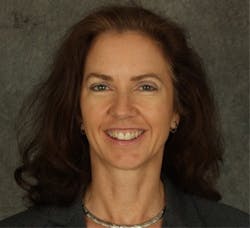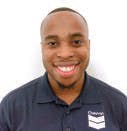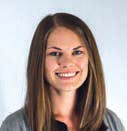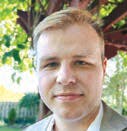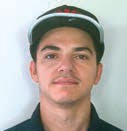12 under 30: Insights from the next generation of manufacturing workers
We asked a dozen fresh voices in industrial roles how they arrived at their current positions and what they recommend to others seeking career direction. Their insightful replies offer keys to ramping up recruiting in this desirable yet under-represented demographic.
Growing up, Udegbue did well in math and science, and her parents encouraged her to consider engineering. “Careers are dynamic, and people end up in the most unexpected places,” she observes. “Do not be afraid of trying different things, taking up new roles, and implementing whatever ideas you might have. That is the only way to find the path that best suits you.”
Ferguson, who graduated with a mechanical engineering degree from Clemson University, advises that college won’t “give you all the knowledge you need to work in the real world. It just gives you the basic tools that you need to learn the skills you need for your job.”
Stibrany recommends that young newcomers build relationships with veteran staff, in a variety of responsibilities, to obtain a comprehensive understanding of their industry’s operations.
Anumnu’s career in electrical engineering was inspired by an 11th grade class that introduced him to digital logic, circuit design, and Multisim software. All of these are the basis of what he does today as an electrical engineer in industry.
The people are what he likes most about working in industry. “You get to see all walks of life, culture, religion, and attitude. Being able to work with another individual to innovate, create, or complete a project offers a great feeling of fulfillment,” Haddad explains.
Alexander recommends taking plant tours or watching plant tour videos and trying a summer internship. “Internships only last a few months and typically people find out right away if they have a passion for the work,” he explains.
“I was always good with my hands even before working at LPR,” Rattotti says. “I enjoy being able to work in the designing portion of a job, getting to make the physical product, and being able to see it all come together.” When the time comes, he hopes to buy the business and improve on what his father has already accomplished.
“I would encourage those that are still in college to seek a co-op program as this opened my eyes to a career that I didn’t know existed, but now greatly enjoy,” Niccum suggests.
His father, an engineer, first exposed him to manufacturing and maintenance principles, but his internship in the maintenance department of Purdue University’s Housing and Food Services was his biggest influence. “My passion is in making improvements in savings, safety, and the environment in a world that is normally very driven by profits,” Clark explains.
Today, at age 29, Pardue is responsible for maintenance execution at IXD sites across the eastern U.S. “Amazon’s exponential growth allowed me to push further, faster than I would have been able to in most industries and has allowed me to enact initiatives that would be slow if not impossible to implement at a more conventional, less nimble company,” he says.
Arias-Roman encourages others to consider skilled trades. “Though our world is constantly evolving, the need for many specific trades is continuous and provides for stability, even in rocky times,” he advises.
“The sheer insight that an ergonomically designed, wearable robot can effectively be used as an extension to an occupational/physical therapist’s arsenal for aiding patients is what keeps me motivated in this field,” Ahmed explains.
This article is part of our monthly Technology Toolbox column. Read more from Sheila Kennedy.
About the Author

Sheila Kennedy
CMRP
Sheila Kennedy, CMRP, is a professional freelance writer specializing in industrial and technical topics. She established Additive Communications in 2003 to serve software, technology, and service providers in industries such as manufacturing and utilities, and became a contributing editor and Technology Toolbox columnist for Plant Services in 2004. Prior to Additive Communications, she had 11 years of experience implementing industrial information systems. Kennedy earned her B.S. at Purdue University and her MBA at the University of Phoenix. She can be reached at [email protected] or www.linkedin.com/in/kennedysheila.

